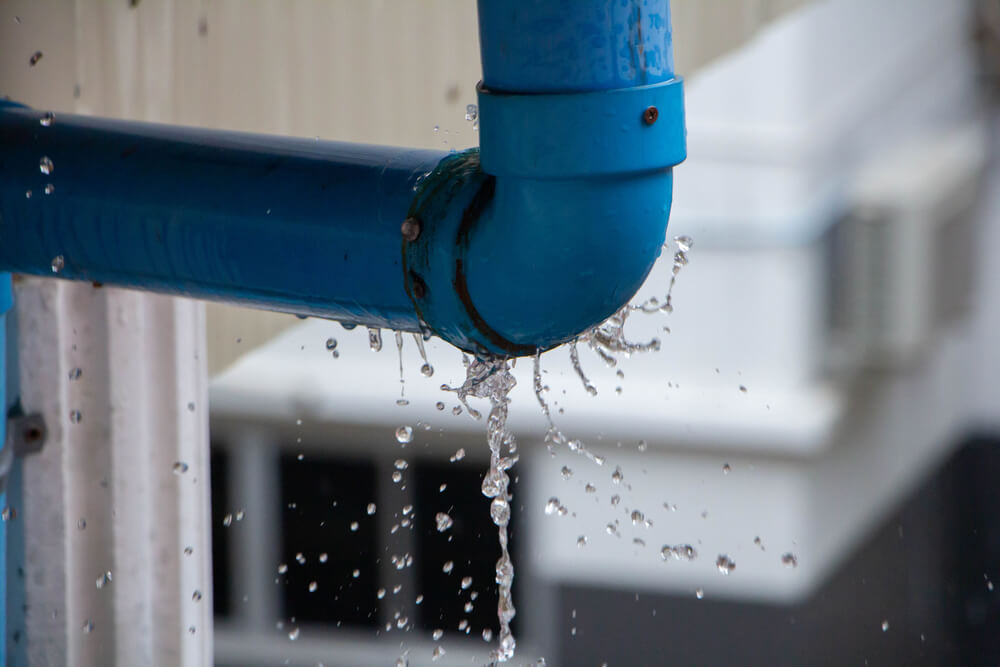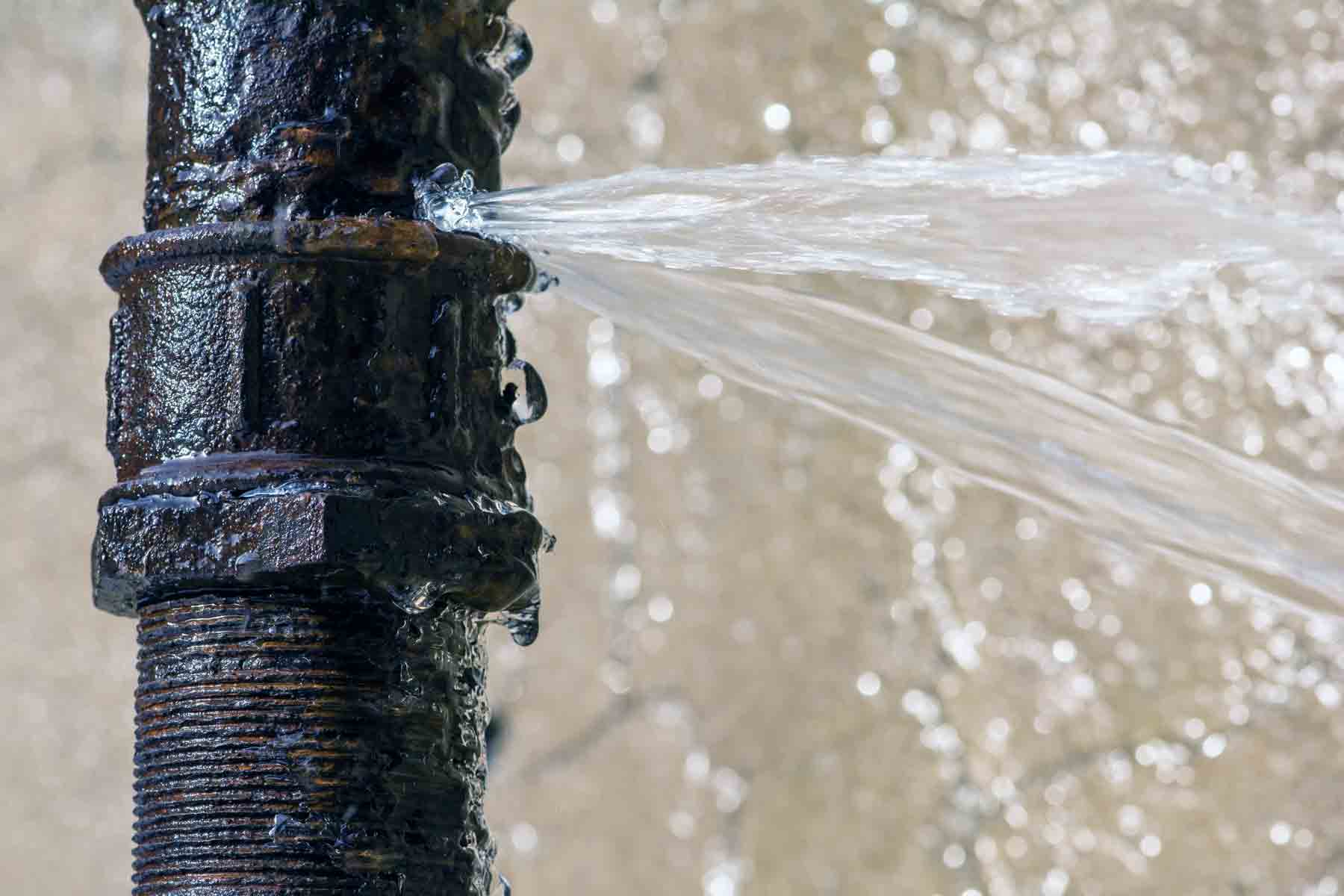How to Handle a Burst Pipe: Essential Steps for Immediate Action
Wiki Article
Indications of a Ruptured Pipeline: Just How to Deal With the issue and recognize
Understanding the indications of a ruptured pipeline is essential for house owners aiming to protect their property from considerable water damage. Secret indicators include water stains on ceilings, inexplicable pools, and fluctuations in water stress. In addition, the existence of unpleasant smells or unexpected spikes in water bills might indicate underlying plumbing issues. Determining these symptoms early can promote timely action, yet recognizing how to effectively resolve the situation is just as crucial. The subsequent actions can indicate the difference in between a small inconvenience and a pricey disaster.Water Stains on Ceilings

Furthermore, the structure of the stained location may end up being softer or drooping, suggesting that the underlying structure is compromised - burst pipe. It's important to check out spots carefully; if they are accompanied by peeling off paint or flaking plaster, this additional suggests recurring wetness problems that can be linked to a ruptured pipe

Overlooking these indicators can lead to more substantial damages not only to your ceilings but likewise to the overall integrity of your home. It is suggested to take prompt action by getting in touch with a qualified plumbing technician if you observe water discolorations. Early treatment can prevent additional complications, such as mold and mildew development or architectural damages, conserving you money and time over time.
Unusual Water Pools
Unusual water pools in your home can be a considerable indicator of a plumbing issue, especially a ruptured pipeline. These unanticipated accumulations of water can occur in different places, such as under sinks, near devices, or even in cellars and crawl spaces. Determining the resource of these puddles is essential, as they can cause comprehensive water damage and mold growth otherwise resolved quickly.
In some cases, the existence of standing water might show a ruptured pipeline, specifically if it is come with by an unexpected drop in water pressure or a noticeable rise in your water bill. If you believe a ruptured pipeline, it is important to switch off the major water supply and speak to a qualified plumber instantly to assess the situation and apply essential repairs. Timely intervention can stop further damages and costly repair services.
Unexpected Adjustments in Water Pressure
A sudden adjustment in water pressure can be a clear indicator of a major pipes concern, such as a ruptured pipeline. Property owners might see this modification with ever-changing water circulation, where taps provide water inconsistently-- sometimes weakly, and at other times with too much force. Such irregularities frequently come from a decline in stress triggered by a burst pipeline, which enables water to escape before reaching its intended destination.Sometimes, the pressure might boost substantially because of clogs or constraints in the pipes system. This stress accumulation can intensify existing issues, potentially bring about additional damages within the pipelines. It is vital to acknowledge these modifications quickly, as they may represent that a burst pipe impends or has already happened.
To attend to unexpected changes in water pressure, homeowners need to first look for noticeable leakages and keep track of the performance of their pipes fixtures. If the trouble lingers, it is advisable to seek advice from an expert plumbing technician. They can perform a complete assessment of the plumbing system, recognize the origin reason of the stress change, and suggest proper rehabilitative actions to stop more problems.
Unpleasant Odors in Home
Remaining unpleasant odors in the home can indicate underlying plumbing concerns, consisting of the possibility of a ruptured pipe. When a pipeline bursts, it can lead to the buildup of water in locations that are not easily visible, creating a breeding ground for mold and bacteria. This torpidity often causes mildewy, foul scents that may penetrate living areas.Along with mold and mildew, the presence of sewer smells can show that a drainpipe line has actually been jeopardized because of a ruptured pipeline. It postures severe wellness threats and requires prompt attention if wastewater leakages into your home. Property owners must pay close attention to the types of smells; for instance, a rotten egg scent may suggest a gas leakage, while a sewage-like smell suggests an extra pressing plumbing problem.
If you spot any one of these unpleasant scents, it's crucial to investigate additionally. Examine locations where pipelines are located, such as cellars or crawl spaces, for indications of moisture (burst pipe). If issues are discovered, calling a licensed plumbing technician is necessary to assess the situation and execute needed repair work, ensuring your home remains risk-free and odor-free
Boosted Water Expenses
An unexpected spike in water costs can function as a caution indicator of plumbing issues, including the capacity for a ruptured pipe. Homeowners may neglect gradual rises, however an unexpected increase in water expenses normally shows a leak or unmanageable water flow. When a pipeline ruptureds, water escapes right into areas where it is not meant to be, leading not just to raised energy costs but likewise to potential residential or commercial property damage.To recognize if a burst pipeline is responsible, compare recent water expenses with historic data. If the boost is out of proportion to your normal consumption, it warrants further investigation. In addition, checking your water meter can give understandings; if the More about the author meter remains to run while all water sources are shut off, a leakage is likely existing.
Resolving this problem quickly is vital. Call a certified plumbing technician to conduct a complete inspection and remediate the situation. Ignoring raised water bills can cause more substantial issues, including expensive repair services and considerable water damages. By staying attentive about your water use and without delay addressing anomalies, you can secure your home and finances from the repercussions of a burst pipeline.
Conclusion
In summary, acknowledging the signs of a burst pipe is essential for mitigating possible water damage. Water stains on ceilings, unusual puddles, abrupt changes in water stress, undesirable odors, and increased water costs offer as crucial signs of pipes problems.Secret indicators include water spots on ceilings, inexplicable pools, and changes in water pressure.In some situations, the presence of standing water might show a burst pipeline, particularly if it is accompanied by a sudden decrease in water stress or a recognizable boost in your water costs. Home owners may overlook progressive boosts, but an abrupt surge in water costs generally shows a Get the facts leakage or unmanageable water flow. Neglecting raised water expenses can result in even more substantial issues, consisting of expensive fixings and comprehensive water damage. Water stains on ceilings, unusual puddles, sudden adjustments in water pressure, unpleasant smells, and increased water expenses serve over here as critical indicators of plumbing concerns.
Report this wiki page